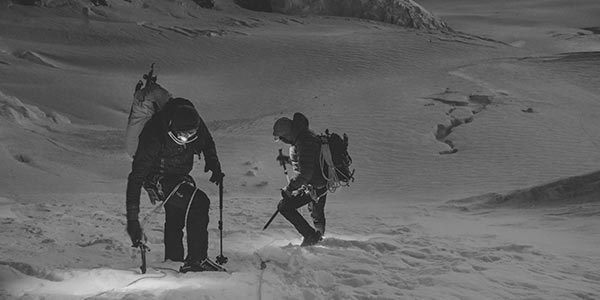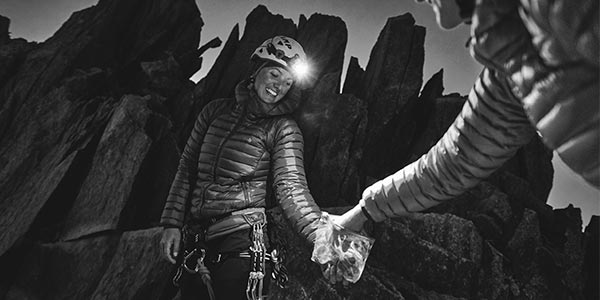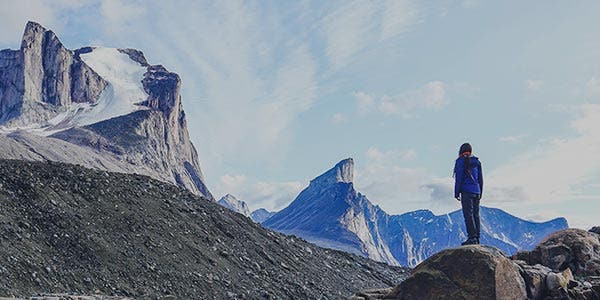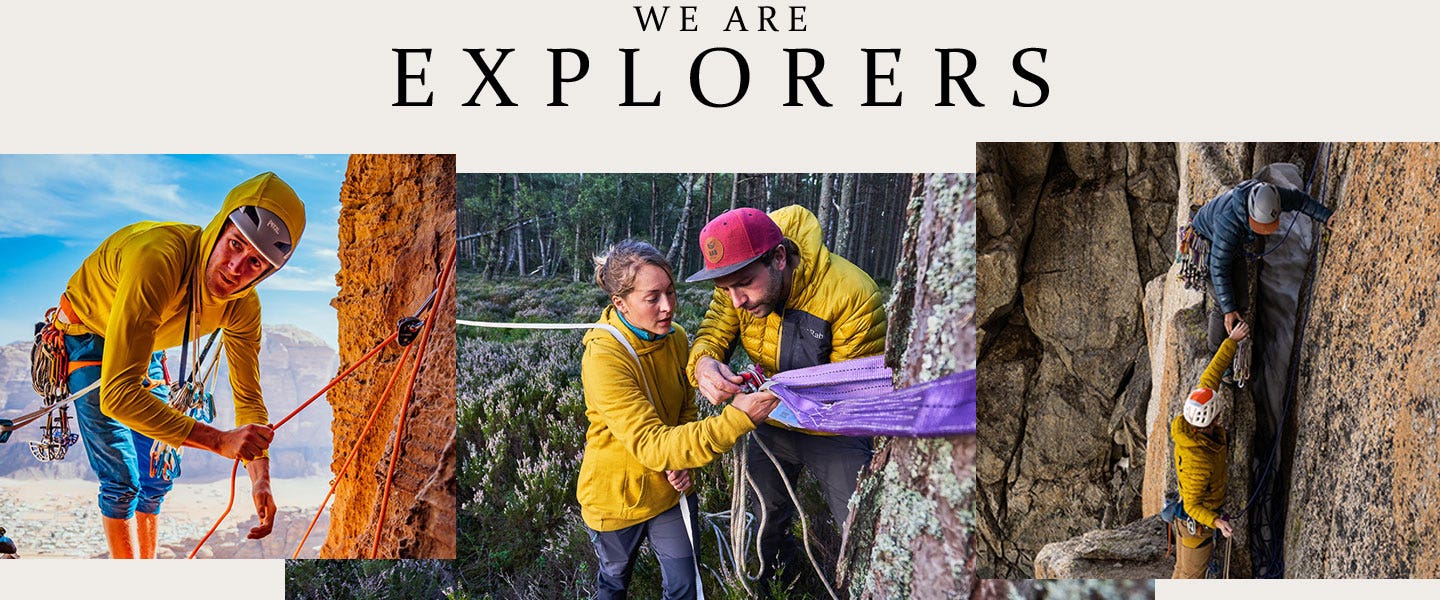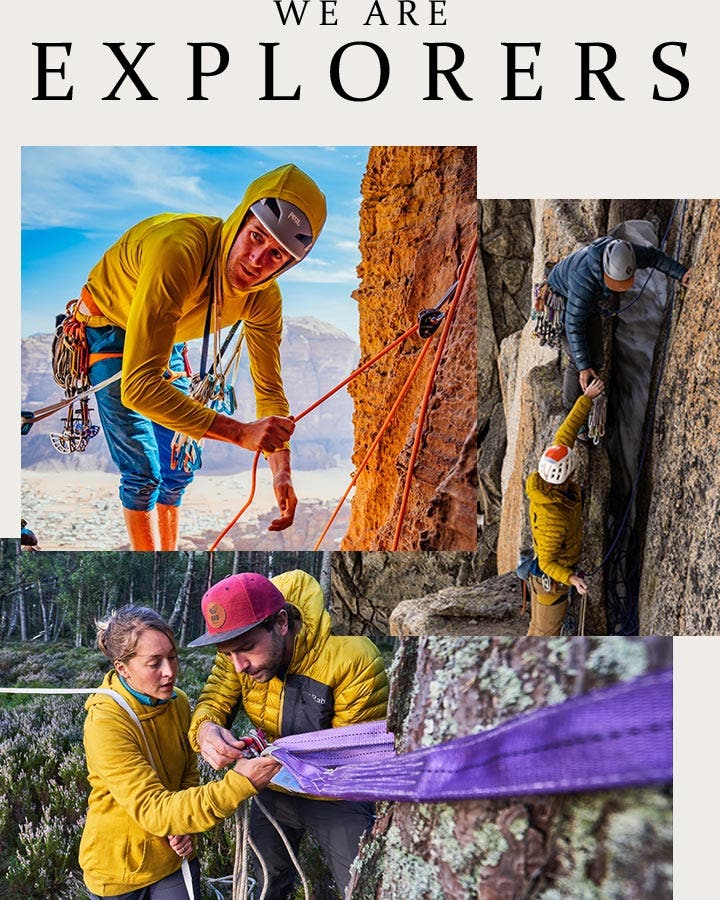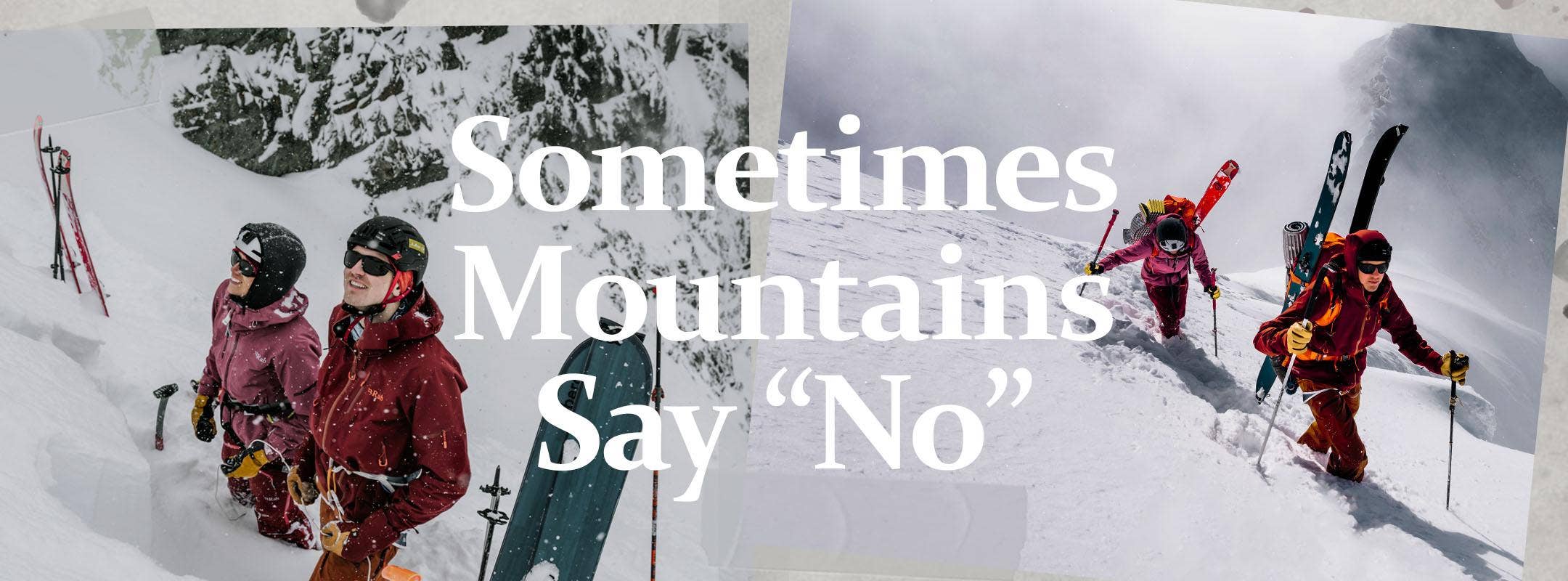
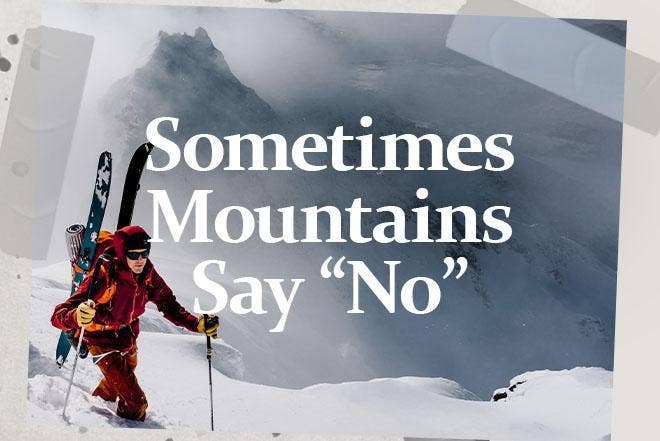
We find ourselves in the Lyngen Alps, an extremely alpine mountain area in the north of Norway that sits between two fjords, Lyngen and Ulls. The wind is blowing from the west and dark bands of snow showers are lined up in a row out to sea, awaiting their turn to roll in over land. It’s the end of April and while the spring ski season is well underway in most parts of Norway, here in Lyngen, it feels like the heart of winter.
The fresh snow from yesterday settled like a blanket over the landscape, the sky is a dreary grey, and heavy fog clings to the mountainside. In other words, there is little to remind one of the glossy pictures you often see from the Lyngen Alps on social media. Nevertheless, we are hoping that maybe, just maybe, there could be a weather window that lasts long enough for us to ski the north face of Store Jægervasstind.
Jægervasstindan is a mountain massif located on the northern part of the Lyngen peninsula and it consists of three mountains: Store (Big), Lile (Little) and Nordre (Northern) Jægervasstind. The three mountains are surrounded partly by large glaciers, which makes the area even more exposed to localized weather. The normal route goes up and down via the glacier Trollbreen and a west-facing couloir of 35-45 degrees. From the top of the couloir, you follow the southern ridge to a false summit at 1,520 meter above sea level, before continuing along an airy and relatively technical ridge to the actual summit.
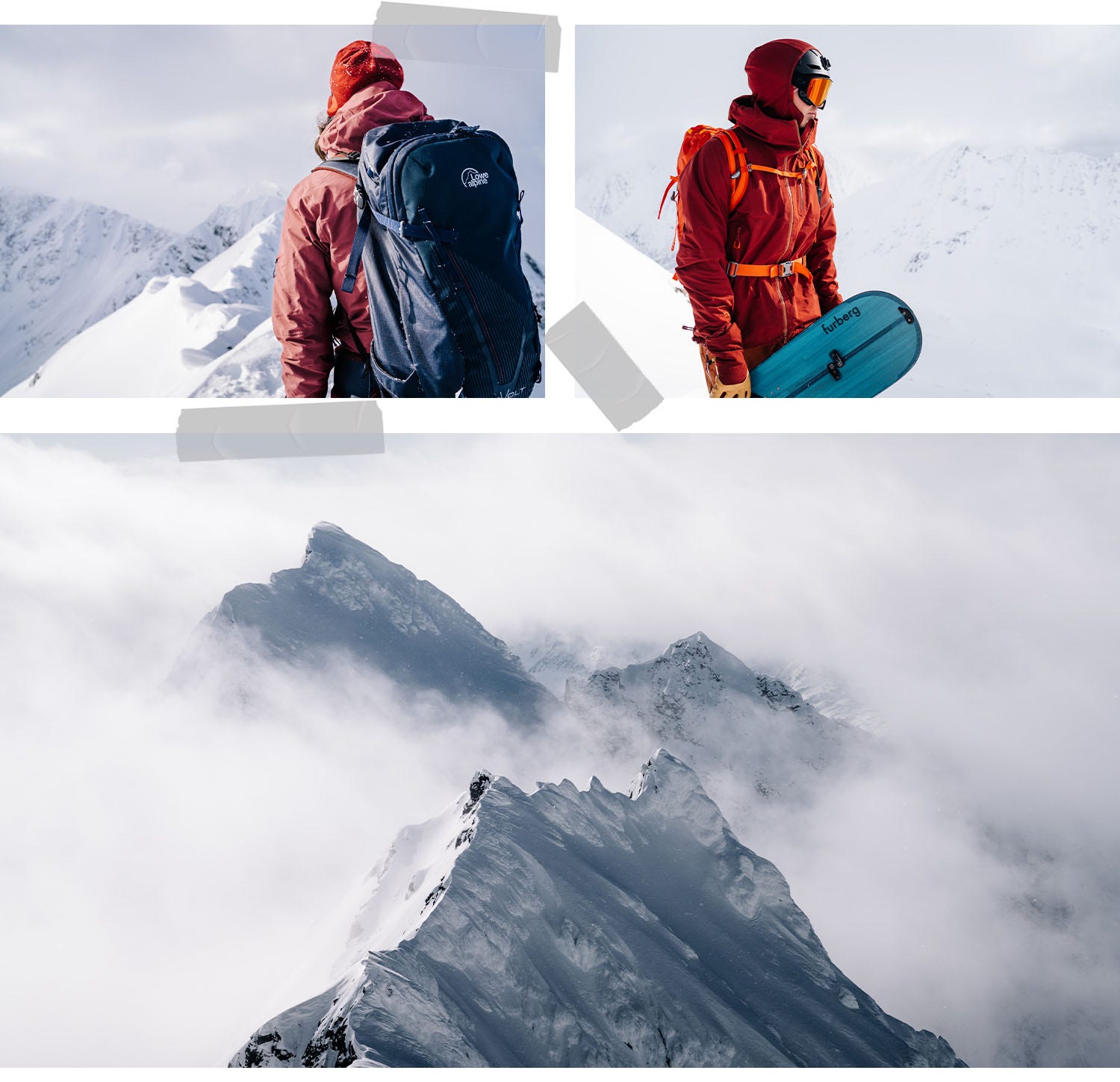

We park by Jægervatnet, a lake west of Store Jægervasstind, and shoulder our packs filled with sleeping bags, sleeping pads, food, cooking equipment, crampons, ropes and ice axes. Originally, we had dreamed of a bivi on the razor-sharp summit ridge in order to wake up and ski the 1,543 meters down into the sunrise. However, the insidious westerly weather does not exactly inspire high mountain accommodations. Plan B, therefore, is to descend the north face, then bivi at the foot of the mountain called Lenangstindan in order to ski a new couloir the next day.
After traversing a forest road for a kilometre and a half, we finally start working our way up the massive terrain. 1,543 vertical meters is a lot longer than you think when you start from sea level. On the horizon to the northwest, we glimpse a cluster of very dark clouds that were definitely not there when we started skinning. The mood in the group is marked by the changing weather, and at some point, we simply must ask ourselves if we really have any business being out here with such an unpredictable weather forecast. We agree that as long as we have enough visibility on the top ridge to avoid the nasty cornices, it does not matter if we have to skin blind a little on the way. After discussing different scenarios and clarifying expectations, not only does the mood in the group lighten up, but when we reach an altitude of 1000 meters, we can start to make out blue skies behind the black, heavy clouds. Motivation increases and so does the pace. Is this the weather window we have been waiting for? We still have more than 500 steep meters to go, and it is clearly going to be a race against the clock.
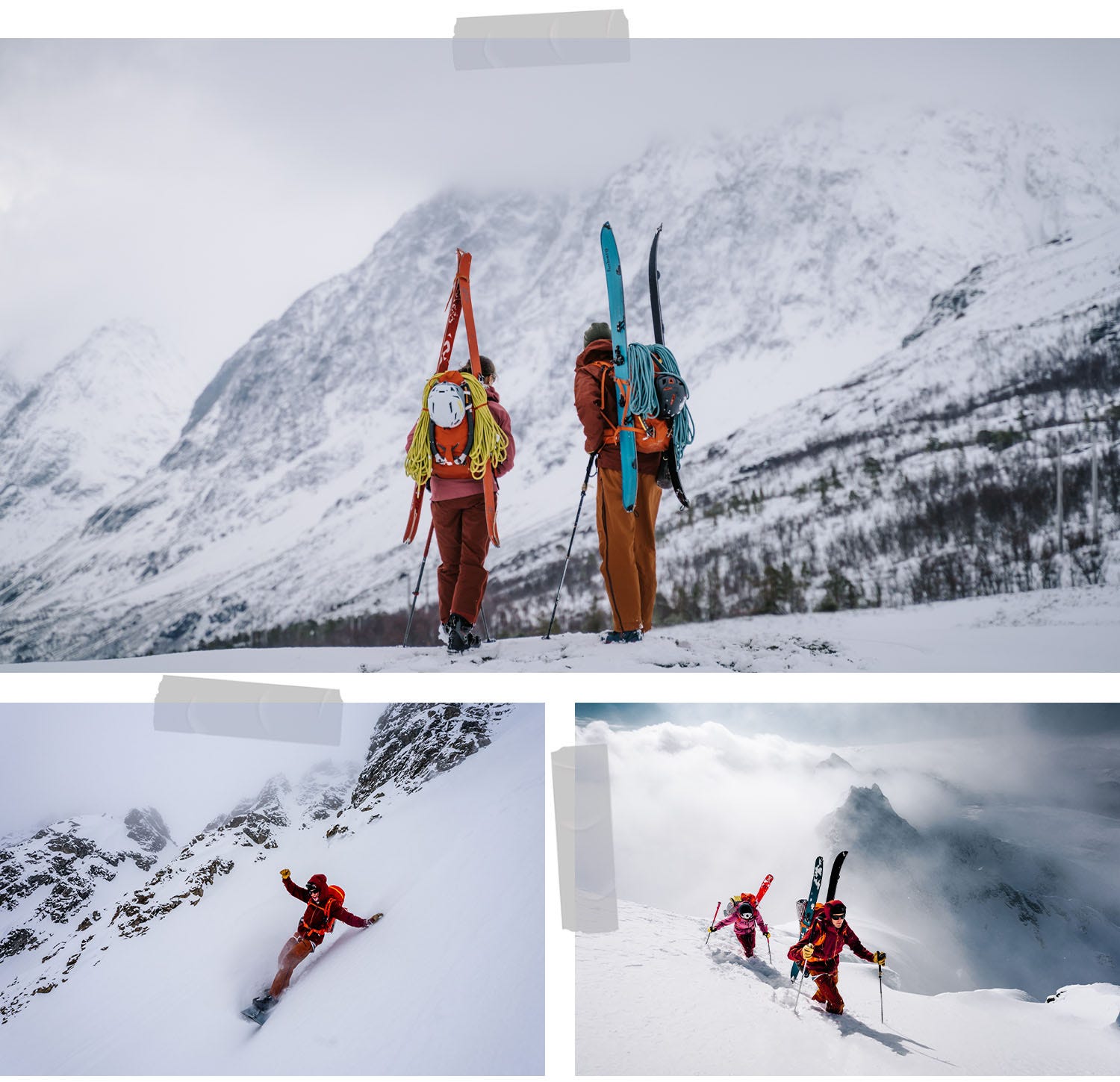

At the foot of the couloir that will lead us to the top ridge, we make a quick stop to fasten our skis and split boards on our backpacks. Krister is as far from a "slowboarder" as you can get and, in most cases, is the fastest one of us to transition from skinning to boot packing. This means that Krister is most often the one who breaks trail, and I struggle to lift my legs enough to follow in his giant footsteps. Halfway up the couloir, the weather clears, and the view takes our breath away (well, what little breath we have left). We up the pace yet another notch and cross our fingers that the weather window lasts long enough for us to get both up and down. The snow seems surprisingly unaffected by the wind that ravaged the night before. It’s looking really good!
Approaching the false summit, we are greeted by a sight we won’t soon forget. Out of the fog, pointed peaks protrude in every direction and the ridge in front of us is bathed in sunshine above a pool of clouds. It’s strange how weather has the ability to affect one’s mental state. A little fog and wind can make even the simplest trips feel more serious than they might otherwise be. Maybe it is some innate instinct, or possibly knowledge gained from a (relatively) long life in the mountains, but in this case at least, it feels like walking along the exposed summit ridge is the most natural thing in the entire world, and we leave the rope in the backpack.
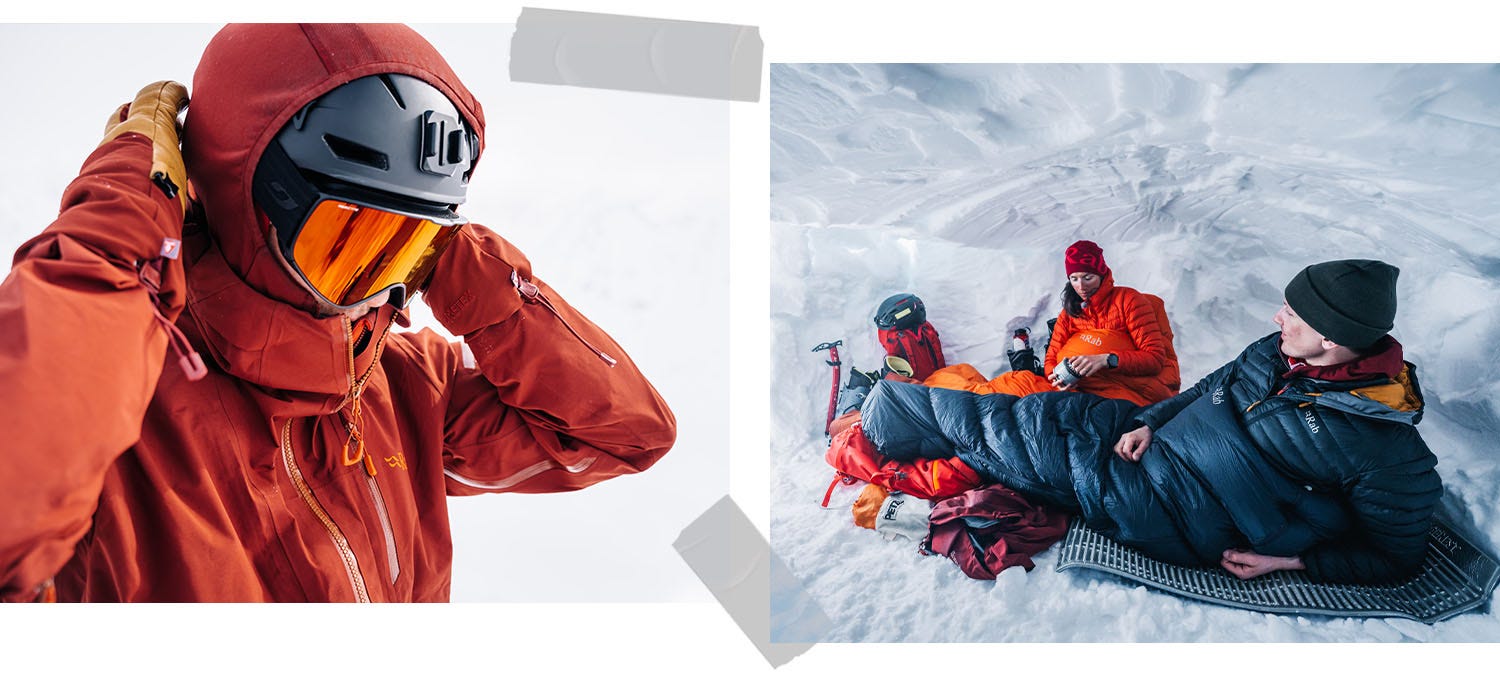

And then, just like that, everything changes. We barely manage to get to the summit before we are once again enveloped in the thickest fog you can possibly imagine. The mountain, which a few seconds ago had seemed so inviting and safe, has decided in no time that it was not so happy with our visit after all. We put on all the warmest clothes from our backpacks and sit down to wait. At this point we have no idea what it looks like around us, we could just as easily have been in the lowlands. We also do not know if there is a new weather window lurking, or if we missed the only opportunity for this day. After waiting for what feels like an eternity, we eventually get in touch with a friend who is on one of the neighbouring mountains. He confirms that the weather does not look very promising, and that we are simply in the middle of it (and it does not look like it’s going anywhere soon). We agree that heading down the steep 50-degree north face without visibility is out of the question. The decision to turn around requires no discussion, today is just not the day. It starts to snow lightly, and we are completely dependent on being able to follow our own tracks back along the ridge. We, therefore, have no time to lose and rush off into the white out.
The snow in the west couloir is insanely good, and the high walls create enough contrasts that we manage to enjoy ourselves. Even though the terrain down the Trollbreen glacier is quite a few degrees lower than our original plan, we both smile, ear to ear. Further down in the valley, after some snow cave digging and a good dinner, warm and cozy sleeping bags await. Tomorrow is a new day.
Thea is a highly versatile and passionate mountain guide from Norway that spends her time off exploring steep ski lines in the Lyngen alps or climbing the perfect granite in Lofoten, Tromsø and her home mountains, the Jotunheimen.
Read more about Thea here

